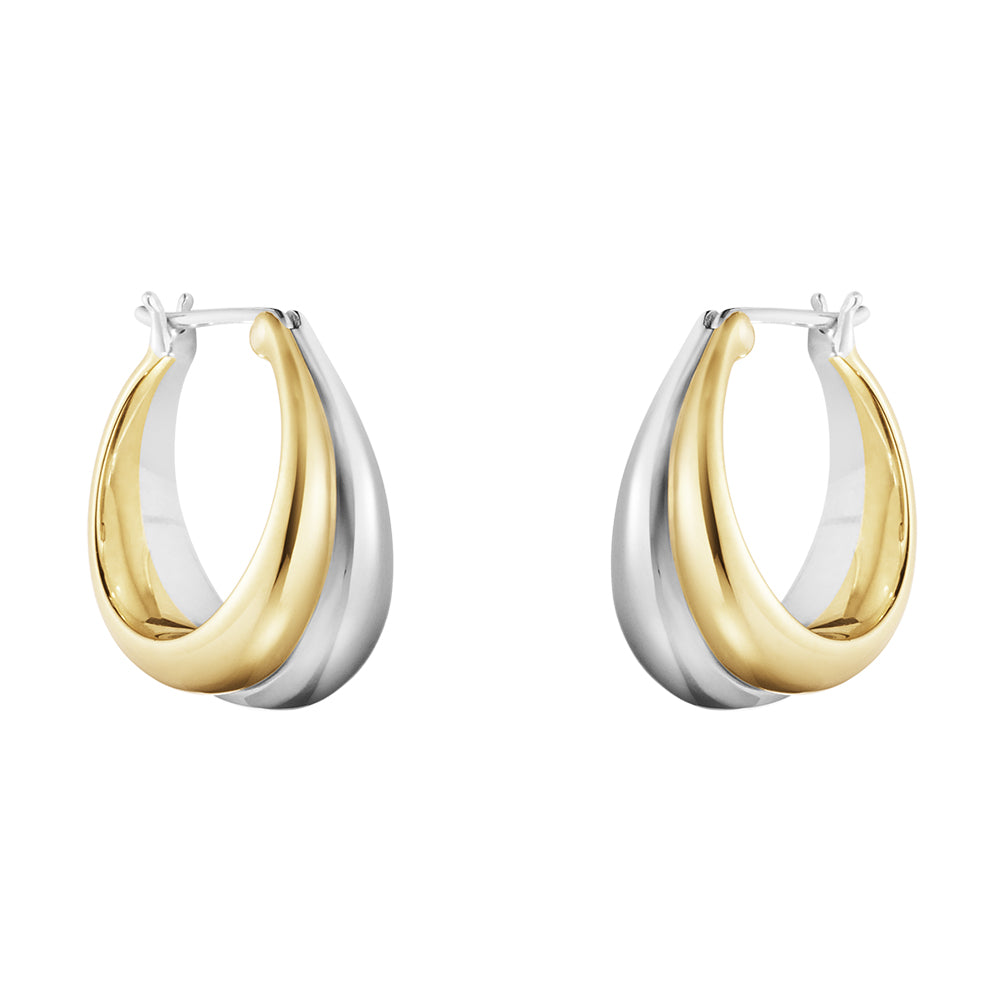
What Does It Mean When Earrings? A Complete Guide
Introduction
Earrings are more than adornment—they carry culture, identity, and meaning. Across time and continents, they speak of wealth, love, rebellion, and health. This article explores their symbolism, science, and stories, from material choice to gifting, loss, and hidden biological truths.

The Timeless Role of Earrings in Human Culture
Earrings stand among the oldest forms of human adornment, with evidence dating back to Mesopotamia (circa 2500 BCE). Gold hoops excavated from Sumerian tombs were not mere accessories—they symbolized wealth, fertility, and divine favor. The Metropolitan Museum of Art notes that in ancient Egypt, earrings often featured sacred animals or deities, worn as protective amulets.
In ancient India, earrings carried deep spiritual and cultural meaning. The practice of Karnavedha—ear piercing—was one of the traditional Samskaras (life-cycle rituals) performed during childhood. Within the framework of Ayurveda, this ritual was believed to activate vital points connected with intellect, memory, and even reproductive health. As noted in a review published on the National Center for Biotechnology Information (NCBI), these associations reflect traditional Ayurvedic beliefs rather than modern biomedical evidence.
In medieval Europe, sailors wore single earrings for protection, believing the gold could pay for a dignified burial if they died at sea. In a different cultural context, the Ottoman Empire assigned entirely different meanings: men’s earrings projected strength and boldness, while women’s ornate, gem-studded pieces proclaimed wealth and rank.
These traditions illustrate that earrings have always operated at the intersection of beauty and belief—personal declarations tied into the social and spiritual fabric of each era.

What Does It Mean When Earrings Hurt?
Pain in earrings is one of the most common modern questions, and its meaning is multifaceted. From a medical standpoint, pain often signifies inflammation or improper healing. The American Academy of Dermatology (AAD) explains that fresh piercings are open wounds; soreness or tenderness may persist for weeks while tissue regenerates.
But pain can also be symbolic. Anthropologists point out that enduring discomfort during ear piercing has historically been seen as a rite of passage—a transition from childhood to adulthood, weakness to resilience. In this sense, pain is not merely biological but cultural, an initiation into maturity.
Subtle pain in healed piercings may also reveal lifestyle habits: tight headphones, sleeping on one side, or exposure to allergens. Understanding this pain requires both medical awareness and attentiveness to how earrings interact with daily life.
What Does It Mean When Earrings Itch or Cause Allergies?
Itching is usually the body’s way of signaling irritation or an allergic reaction. Among jewelry-related allergens, nickel—commonly found in inexpensive alloys—is one of the leading culprits. According to the U.S. Centers for Disease Control and Prevention (CDC), nickel ranks as a frequent cause of allergic contact dermatitis, a condition that affects millions of people worldwide.
Yet the meaning of itching goes beyond surface irritation. Earrings sit directly against the skin for hours at a time, creating a continuous exchange between metal, sweat, natural oils, and immune cells. In this delicate dialogue, even trace amounts of nickel or cobalt can be enough to trigger the body’s defense mechanisms in sensitive wearers.
Fortunately, science also points toward solutions. Clinical reports and small-scale studies suggest that titanium and surgical-grade stainless steel dramatically reduce allergic responses. Opting for hypoallergenic materials, therefore, is not simply about comfort—it reflects an understanding of the body’s unique biochemistry and a commitment to harmony between adornment and health.

What Does It Mean When Earrings Turn Your Skin Green?
Few things puzzle jewelry lovers more than the mysterious green stain left behind by certain earrings. Despite common fears, this discoloration is not a sign of infection—it is simply chemistry at work. When metals containing copper, such as brass or bronze, come into contact with the natural acids in sweat, they form greenish salts that can transfer onto the skin.
Far from being dangerous, this reaction is harmless, though often unwelcome for aesthetic reasons. The effect is the same process that gives the Statue of Liberty its famous green patina: copper slowly transforming when exposed to moisture and air.
In everyday wear, these stains are less about poor hygiene and more about the fascinating interplay between body chemistry and metal. Opting for materials like higher-karat gold, platinum, or rhodium-plated designs helps avoid the effect—proof that jewelry is not only an art form, but also a subtle science woven into daily life.
What Does It Mean When Earrings Are Given as Gifts?
The gifting of earrings carries layers of symbolism. In romantic contexts, earrings often embody intimacy and closeness, as they are worn near the face—arguably the most personal canvas of human expression. According to consumer research conducted by Jewelers of America in 2020, earrings consistently ranked among the most popular jewelry gifts for romantic occasions, alongside rings and necklaces.
Yet the meaning of earrings extends far beyond romance. Within family traditions, earrings given at milestones—first birthdays, graduations, weddings—signal continuity across generations. Unlike rings, which often emphasize vows, earrings emphasize presence: the closeness of listening, the nearness of the heart.
This sense of connection also carries into friendships. When friends exchange earrings, the gesture leans toward companionship and shared taste. They become wearable reminders of belonging, proof that jewelry is not merely decorative but deeply relational.

The Psychology of Wearing Earrings
Psychologists observe that jewelry, and earrings in particular, shape both self-perception and social impression. Adornment acts as an extension of identity—what we wear subtly reinforces who we believe ourselves to be. Earrings, framing the face so closely, can influence how people experience their own attractiveness, balance, and even presence in a room.
At the same time, earrings serve as silent communicators. Bold hoops often project confidence and openness, while delicate studs suggest refinement and restraint. The choices people make are rarely accidental; they are tied to mood, circumstance, and subconscious self-expression. Someone preparing for a job interview might instinctively choose understated earrings to signal professionalism, while the same person may reach for glittering drops at a wedding to mirror joy and celebration. Even in casual settings, friends often pick playful, colorful designs to express warmth and approachability.
In this way, earrings are more than adornment. They are quiet but powerful instruments of psychological expression—shaping how we feel about ourselves, and shaping the stories we wordlessly tell others.
Earrings Across Cultures: Rituals, Beliefs, and Status
From the Maasai tribes of Kenya—where elaborate bead earrings symbolize age, courage, and social status—to the refined courts of Japan’s Heian era, where pearl earrings embodied poetry, refinement, and the fleeting beauty of nature, earrings have long acted as cultural texts that speak louder than words.
In the ancient Mediterranean world, Greek and Roman women wore golden hoops as signs of wealth and divine favor, while men in certain warrior classes also adopted earrings as markers of rank. Across the Atlantic, Mayan and Aztec civilizations prized jade and obsidian ear ornaments, believing that the ear was a portal for spiritual communication. Among Viking communities, archaeological evidence suggests that silver and bronze earrings were both a display of trade wealth and a talisman for protection.
In South Asia, earrings remain inseparable from ritual and tradition. Bridal adornments such as jhumkas or kundan earrings are not optional embellishments but integral to the ceremonial grammar of weddings, believed to channel prosperity and invoke blessings. By contrast, in modern Western societies, earrings often serve as declarations of individuality—whether through minimalist studs, bold hoops, or multiple piercings that were once associated with rebellion but are now embraced as mainstream fashion.
Taken together, these traditions reveal that to ask “what do earrings mean?” is to navigate a spectrum: on one side, the universal human desire for adornment; on the other, the specific cultural scripts that assign meaning—status, protection, beauty, or belonging. Earrings, in their small but powerful form, are therefore not just ornaments but living archives of human history and identity.

What Does It Mean When Men Wear Earrings?
Historically, men’s earrings were as common as women’s. Ancient Persian soldiers wore earrings as symbols of strength. In Elizabethan England, noblemen flaunted pearl drops. In the 20th century, men’s earrings reemerged as symbols of subculture—rock musicians, LGBTQ+ communities, and countercultural movements claimed them as badges of identity.
Today, men’s earrings blur the line between rebellion and mainstream fashion. When men wear earrings, the meaning depends largely on context: personal style, cultural background, and generational norms. Fashion psychologists argue that such jewelry challenges rigid gender codes, expanding the definition of masculinity.
What Does It Mean When Earrings Are Removed or Lost?
The act of removing earrings has long carried symbolic weight, often signaling thresholds in human experience. In ancient Rome, women would remove their jewelry during times of mourning, a gesture that stripped away adornment to mirror grief’s austerity. In parts of South Asia, widows traditionally set aside earrings along with other ornaments, signifying the end of marital identity. Within monastic traditions, renouncing earrings and other jewelry became a rite of purification—a deliberate severing of worldly attachment in exchange for spiritual devotion. To take off an earring, then, is never merely practical; it often represents transformation, the passage from one life phase into another.
The loss of earrings introduces a different register of meaning—accidental, rather than deliberate. European folklore brims with superstitions: a lost earring might foreshadow an unexpected journey, a change in fortune, or even the arrival of a new relationship. In Mediterranean cultures, finding only one of a pair was seen as a sign of imbalance, urging caution in personal affairs. Anthropologists note that these beliefs often grow from the human instinct to interpret material loss as an omen, transforming chance events into meaningful narratives.
Psychologically, losing an earring can stir emotions beyond superstition. Because earrings often accompany milestones—a first piercing, a birthday gift, a wedding set—their disappearance can feel like the rupture of memory itself. An earring lost is not simply a metal fragment misplaced, but a fragment of the self dislodged, a reminder of how closely jewelry intertwines with identity. This explains why some people will search tirelessly for a missing stud or hoop, driven less by economic value than by the irreplaceable weight of sentiment.

Materials and Meanings: Gold, Silver, and Beyond
Earrings speak through their substance as much as their shape.
Gold has symbolized wealth and eternity since antiquity—Egyptians linked it to divinity, while today the World Gold Council notes its enduring role as both adornment and financial security.
Silver, associated with moonlight, was once worn in Europe as protection against evil. Its affordability now makes it a favorite for modern, everyday elegance.
Pearls, formed from irritation transformed into beauty, embody serenity and resilience. The Cultured Pearl Association of America highlights their role as symbols of quiet strength, which is why they remain beloved in bridal jewelry.
Diamonds carry permanence and status, but in the 21st century their meaning has shifted. With the rise of ethical sourcing and lab-grown options, diamond earrings now also represent conscience as much as luxury.
Together, these materials shape how earrings are read—each choice layering personal style with centuries of symbolic weight.
Hidden Sciences of Earrings: From Cells to Metals
Earrings may glitter as ornaments, but beneath their surface lies an intricate dialogue with biology, physics, and chemistry.
Immunological Micro-Evolution
Nickel sensitivity is well-known, yet few realize that repeated exposure can actually reshape local immune memory. Dermatology research shows keratinocytes—the very skin cells lining the ear—release cytokines that “train” immune pathways, meaning the body literally rewrites its defenses around a piercing.
Biomechanics of the Earlobe
Beyond stretching, engineers studying tissue mechanics note that earlobes behave like viscoelastic polymers: under constant force, collagen fibers realign, permanently altering lobe geometry. This explains why some cultures developed spiral or plate earrings, intuitively exploiting the body’s material properties centuries before biomechanics had a name.
Electrochemistry of Metals
When metals meet skin, they do not remain inert. Sweat, rich in salts, creates micro-galvanic reactions. Trace current flows—so subtle they cannot be felt—accelerate tarnish in silver, stabilize gold’s sheen, and may even alter local microbiomes by releasing ions that inhibit or encourage bacterial colonies.
Microbial Ecology of Piercings
Instead of being simple wounds, piercings form miniature ecosystems. Studies in microbiome science reveal that earlobe piercings support distinct bacterial populations compared to surrounding skin—some beneficial, others opportunistic. Earrings thus act as ongoing experiments in human-microbial cohabitation.
Far from passive accessories, earrings emerge here as sites of living science—places where immune systems adapt, tissues deform, metals interact, and microscopic life finds a stage.

Earrings: Identity, Context, and Meaning in Modern Life
Earrings carry layered significance, shaped as much by context as by material or design. In professional settings, subtle studs often convey professionalism in conservative industries, while bold statement pieces in creative fields can signal individuality and confidence—Harvard Business Review notes that fashion choices influence perceptions of competence and authenticity. Beyond the workplace, earrings remain potent markers of identity. Historically, men and women in LGBTQ+ communities used earrings to communicate coded meanings, and today they continue to express queerness, personal style, or solidarity. In intimate relationships, earrings occupy a particularly poetic space: positioned near the ear, they metaphorically echo listening, closeness, and attentiveness, which is why they remain meaningful gifts.
In the 21st century, sustainability further layers their symbolism. Younger consumers increasingly seek traceable, ethically sourced metals and gemstones, so earrings crafted from recycled gold or lab-grown diamonds now signal responsibility as much as beauty. Choosing earrings thoughtfully—considering material science (hypoallergenic metals), symbolic associations (gold for wealth, pearls for wisdom), social context, and ethical sourcing—transforms them from mere accessories into living symbols, reflecting identity, intention, and values all at once.
Conclusion
To ask “what does it mean when earrings…” is to engage with one of humanity’s oldest and most intimate dialogues. Earrings mean beauty, pain, status, identity, memory, and science all at once. They tell our stories while shaping our biology, bridging the gap between personal adornment and cultural inheritance.

FAQ
Q1: What does it mean when earrings hurt after years of wearing them?
It may signal irritation, infection, or an allergic reaction. Consult a dermatologist if pain persists.
Q2: What does it mean when earrings are gifted in relationships?
They symbolize intimacy, thoughtfulness, and presence.
Q3: What does it mean when earrings itch?
Often an allergic reaction—commonly nickel. Hypoallergenic metals like titanium reduce risk.
Q4: What does it mean when earrings are lost?
Folklore links it to change, while personally it may symbolize letting go.
Call to Action
Earrings are more than decoration; they are cultural legacies, scientific wonders, and intimate companions. Whether you seek symbolism, comfort, or beauty, let your earrings tell a story worth remembering. If you are ready to explore meaningful designs crafted with care, discover collections that honor tradition while embracing innovation.







